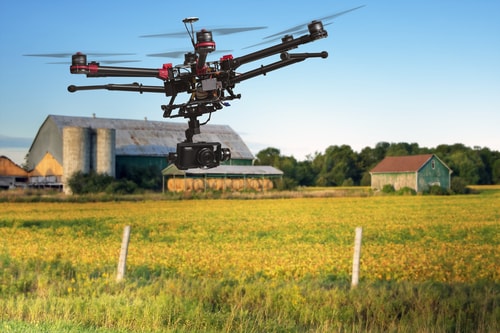Public will have 60 days to comment
By Diego Flammini, Farms.com
More and more, farmers are turning to unmanned aircraft systems (UAS), more commonly known as drones, as a method to keep a bird’s eye view on what’s happening on their farms below.
With the new technology, farmers can use them to look at tilling and drainage, conduct water quality assessments and surveys and even keep birds who want to eat their crops at bay.
In an attempt to keep everyone on a level playing field, the Department of Transportation (DOT) and Federal Aviation Administration (FAA) are proposing new rules for safe and appropriate operation of the equipment.
Some of the proposed rules include:
Certification
- The person flying the drone would be classified as an “operator”. They would need to be at least 17 years of age, pass an aeronautics test and receive their FAA UAS operator certificate.
- They would have to pass an FAA knowledge test every two years.
Flight Limits
- Flights should be limited to a 500ft altitude and speed of 100mph
- Must stay out of airport paths and restricted airspace
- The UAS cannot be flown over people unless directly involved with the flight
- The operator must stop flying if the flight is dangerous to bystanders or other property
The public will have a period of 60 days to comment on the proposed rules.

A drone